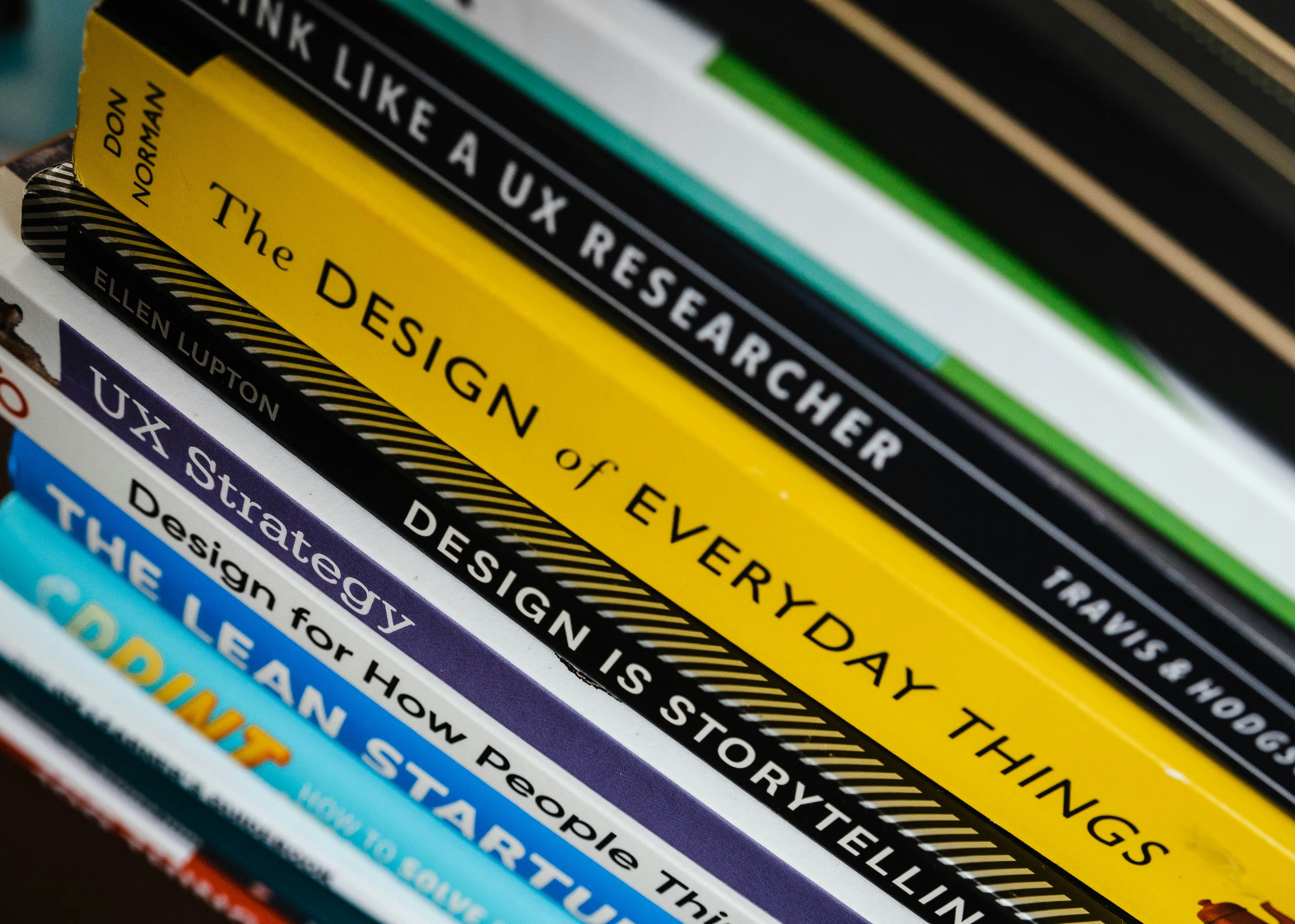Introduction
The rise of artificial intelligence (AI) in UX design has changed the way digital products are conceptualised and refined. As a UX professional with over 15 years of experience, currently leading a team in a company specialising in custom software solutions, I have personally witnessed the increasing role of AI in automating design processes. AI is an invaluable tool for generating ideas, automating repetitive tasks, analysing user data and even creating prototypes to speed up validation cycles. However, its integration into UX has also led to misconceptions and risks that could undermine the discipline.
One worrying trend is the growing reliance on AI for UX decisions among aspiring UX designers, product owners and clients. While AI offers efficiency and optimisation, it is often misunderstood or misapplied. The assumption that AI-generated designs and data-driven optimisations can replace UX expertise is a dangerous oversimplification. UX is more than UI — it is about understanding human behaviour, motivations and pain points. These elements are deeply rooted in human psychology, and despite rapid advances in AI, it still lacks the ability to truly understand the nuances of user experience.
This article explores when AI-generated UX can be a valuable tool, and where human expertise remains irreplaceable.
1. The Appeal and Pitfalls of AI-Generated UX
1.1 The Efficiency Argument
AI-powered UX tools offer a compelling value proposition: speed, automation and data-driven decision-making. These systems suggest layouts, optimise conversion rates and predict user behaviour, enabling rapid iteration that would otherwise require extensive manual effort. For organisations without dedicated UX teams, AI-powered solutions appear to be an attractive shortcut to achieving usability improvements.
1.2 The Illusion of Objectivity
While AI-generated UX appears objective due to its reliance on data, it is not infallible. AI models are trained on historical patterns, meaning they reflect existing biases and limitations rather than actively challenging design decisions. This leads to an illusion of certainty, where AI-generated insights are taken as definitive answers rather than hypotheses that require further validation. AI provides answers based on data, but does not ask the right questions.
AI offers efficiency, but without human oversight, it risks creating impersonal, ineffective and even harmful user experiences.
1.3 The Risk of Superficial Design Improvements
While AI can improve surface-level usability, it lacks a deeper understanding of human behaviour. AI-driven optimisation often focuses on engagement metrics, such as time spent on a page or click-through rates. However, these metrics do not necessarily equate to a positive user experience. Without qualitative validation, AI-generated designs may inadvertently increase frustration rather than improve usability.
The biggest danger lies in using AI as a decision maker rather than an augmentation tool. If teams blindly follow AI-generated recommendations without scrutiny, they risk overlooking essential elements such as cognitive load, accessibility and emotional impact.
2. The Erosion of UX Knowledge
2.1 Over-Reliance by Junior Designers
For junior UX designers, AI tools can serve as powerful assistants, streamlining workflows and generating content suggestions. However, an over-reliance on AI can stifle the development of critical UX skills.
Loss of problem solving skills: UX is fundamentally about solving complex design challenges. AI-generated solutions can discourage designers from engaging in analytical thinking.
Superficial understanding of user needs: AI relies on quantitative data, but lacks the ability to capture qualitative insights, such as emotional responses and long-term behavioural trends.
Failure to challenge assumptions: UX thrives on iteration and user feedback. AI-generated suggestions, if taken at face value, can reinforce faulty assumptions rather than lead to real improvements.
The risk of becoming an AI operator rather than a UX expert: If designers rely solely on AI, they may shift from actively designing experiences to passively executing AI-generated recommendations.
UX is fundamentally about solving complex design challenges — AI-generated solutions can discourage designers from engaging in analytical thinking.
2.2 The Rise of Self-Proclaimed UX Experts
AI-generated UX solutions are particularly appealing to product managers, developers and marketers who lack formal UX training. Many of these individuals may assume that AI negates the need for UX expertise, leading to design decisions based purely on algorithmic output rather than genuine user insight.
Optimising for business metrics rather than user experience: AI-driven UX often prioritises metrics such as engagement and conversion rates. While these metrics are important, they do not necessarily indicate a satisfactory user experience.
Misapplication of AI-generated patterns: Pre-trained AI models rely on generalised design conventions that do not always meet specific user needs.
Lack of attention to accessibility and inclusivity: AI models are only as inclusive as the data they are trained on, meaning biases can creep into AI-generated designs without human oversight.
The illusion of expertise: AI’s ability to generate user flows and interface elements can mislead non-UX professionals into believing they are making informed design decisions, even when they lack basic UX knowledge.
AI can optimise for engagement, but engagement is not the same as a good user experience.
2.3 The Corporate Misconception That UX is Fully Automatable
Some organisations see AI-driven UX as a cost-cutting measure, leading them to reduce or eliminate UX roles. However, this approach carries several long-term risks:
Short-term savings, long-term user dissatisfaction: While AI-generated UX may initially reduce costs, poorly executed design decisions result in user frustration, increased churn and higher customer support costs.
Loss of brand differentiation: If every company uses the same AI-driven design patterns, products will become generic rather than tailored to user needs.
Declining UX maturity within organisations: Organisations that deprioritise human-centred UX risk losing critical user insights and strategic thinking skills.
Overconfidence in AI’s objectivity: AI is only as good as the data it is trained on. Biased datasets can reinforce existing design flaws rather than improve UX.
3. Safeguarding UX in the Age of AI
AI-generated insights should be treated as starting points, not definitive answers.
3.1 Using AI as a Tool, Not a Replacement
AI should support UX professionals, not replace them. The key is to integrate AI in a way that enhances human expertise, not undermines it.
AI-generated insights should be treated as starting points, not definitive answers. Designers need to validate AI-driven recommendations through usability testing and iterative refinement.
UX research must remain human-led. While AI can highlight behavioural trends, human researchers must interpret qualitative factors such as trust, emotion, and context.
AI literacy is essential for UX teams. UX professionals need to develop the ability to critically evaluate AI-generated suggestions rather than accepting them at face value.
3.2 Striking a Balance Between Automation and Human Judgment
To prevent AI from undermining UX expertise, organisations should
Invest in UX training to ensure teams have a strong foundation in research, design principles and usability testing.
Use AI to streamline repetitive tasks, freeing designers to focus on deeper, more complex challenges.
Recognise the limitations of AI and ensure human oversight of critical design decisions, particularly those that affect accessibility and inclusivity.
3.3 Allocating Budget Where It Delivers the Greatest Value
Organisations should strategically allocate resources to ensure that AI complements rather than replaces UX expertise. Thanks to the savings from AI-supported tasks, we can finally channel resources into areas that were previously underfunded — such as user research, usability testing and innovation. AI can optimise workflows, but it should never replace the essential processes that make up the quality of UX design.
4. The Opportunities of AI in UX
While much of the discussion around AI in UX revolves around the risks, it’s equally important to acknowledge the opportunities that AI presents.
The real value of AI in UX lies in its ability to support human creativity, not replace it.
Used strategically, AI can enhance rather than diminish the capabilities of UX professionals. Here are some of the key areas where AI can make a positive contribution to UX design:
4.1 Automating Repetitive Tasks to Free Up Strategic Thinking
AI can handle time-consuming, repetitive tasks such as creating wireframes, automating user journey mapping and analysing large datasets of user behaviour. This allows UX professionals to focus on more complex and strategic aspects of design, such as solving high-impact usability problems and exploring innovative interaction models.
4.2 Faster Prototyping and Validation
AI-powered tools can significantly speed up the prototyping process by suggesting layouts, generating design variations and performing quick usability tests. This allows UX teams to iterate faster, validate hypotheses early and refine concepts before investing in full development cycles.
4.3 Enhancing Data-Driven Decision-Making
By processing vast amounts of user data, AI can identify patterns and trends that may not be immediately apparent using traditional research methods. This enables UX teams to make more informed, data-driven decisions while still incorporating qualitative insights from user research. Ultimately, this allows organisations to allocate budgets more effectively, ensuring that resources are invested where they add the most value — whether in research, iterative design improvements or user testing.
5. The Role of UX Professionals in an AI-Driven World
The growing presence of AI in UX design means that UX professionals need to rethink and adapt their role. Rather than resisting AI, we should leverage its potential while ensuring that UX remains a discipline rooted in human insight and creativity.
5.1 UX Advocacy: How to Communicate AI’s Role to Clients
Many organisations have high expectations of AI, often assuming that it can fully automate design processes. UX professionals have a responsibility to set realistic expectations and educate decision-makers about where AI really adds value — and where its limitations lie.
Understand the difference between automation and strategic design: AI can handle repetitive design tasks, but it cannot identify deep user needs or develop creative solutions to complex problems.
Emphasise the importance of human insight: Customers should understand that while AI can generate data-driven suggestions, qualitative research and real-life user interaction remain essential.
Demonstrate the long-term value of UX: Investing in human-centred UX strategies yields long-term benefits — not only better user experiences, but also increased customer loyalty and market differentiation.
Position AI as an enabler, not a replacement: AI can make the design process more efficient, but UX expertise is still critical to making meaningful, sustainable design decisions.
5.2 How to Train Junior Designers in the Age of AI
One risk is that aspiring UX designers may become overly reliant on AI tools, turning into “AI operators” rather than developing into true UX professionals. To prevent this, training and mentoring programs must ensure that juniors continue to build critical foundational skills:
Problem solving and critical thinking: AI can generate suggestions, but UX designers still need to be able to analyse problems and develop creative solutions.
Empathy and user research: Nothing replaces the experience of talking to real users, conducting interviews and deeply understanding their pain points.
The ability to articulate design rationale: Juniors should not only implement design decisions but also be able to justify why certain solutions are better — independent of AI-generated recommendations.
Build AI literacy: UX designers need to learn how AI works, recognise its biases and understand its limitations, rather than blindly accepting its suggestions.
A pragmatic approach would be to integrate AI tools into the workflow, while also setting regular ‘no-AI’ challenges where juniors have to develop and test concepts independently.
Conclusion: AI as an Ally, Not a Replacement
Perhaps, as AI automates more routine tasks, organisations will finally recognise the full scope of UX work — not just as UI design, but as a discipline rooted in human psychology, behavioural science and strategic thinking.
AI has the potential to improve UX by making workflows more efficient and allowing designers to focus on more strategic aspects of the user experience. But it must be used responsibly. The real value of AI in UX lies in its ability to augment human creativity, not replace it.
As UX professionals, we have an opportunity to shift our focus to deeper research, innovative problem solving and user advocacy. Used correctly, AI can enable us to create better, more human-centred experiences — rather than reducing UX to an automated, algorithmic process. However, this requires a shift in mindset: rather than fearing the impact of AI, UX professionals must learn to critically engage with it, use it strategically, and ensure that human insight remains at the heart of design.
This also means taking an active role in educating clients and organisations about the realities of AI in UX. AI can automate tasks, but it cannot replace human intuition, empathy and strategic thinking. UX professionals must position themselves as advocates for meaningful design and ensure that AI-driven efficiencies are reinvested in areas that truly enhance the user experience — such as research, usability testing and innovation.
Perhaps as AI automates more routine tasks, organisations will finally recognise the full scope of UX work — not just as UI design, but as a discipline rooted in human psychology, behavioural science and strategic thinking. The future belongs to those who embrace AI as a powerful tool, while championing the irreplaceable value of human expertise in creating exceptional user experiences.






